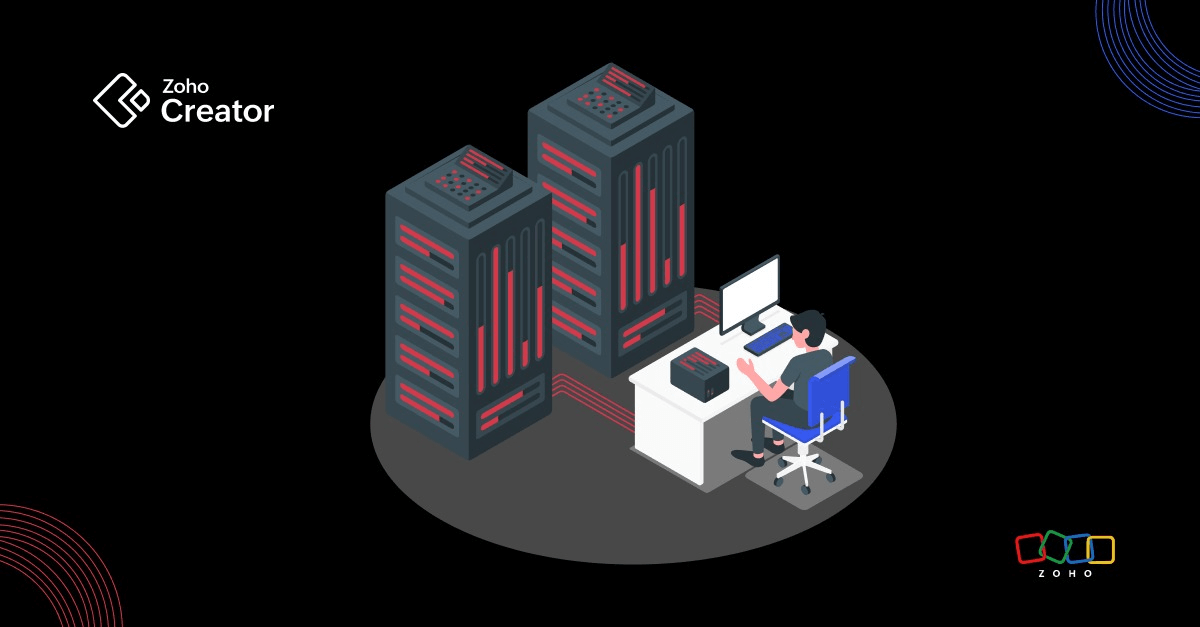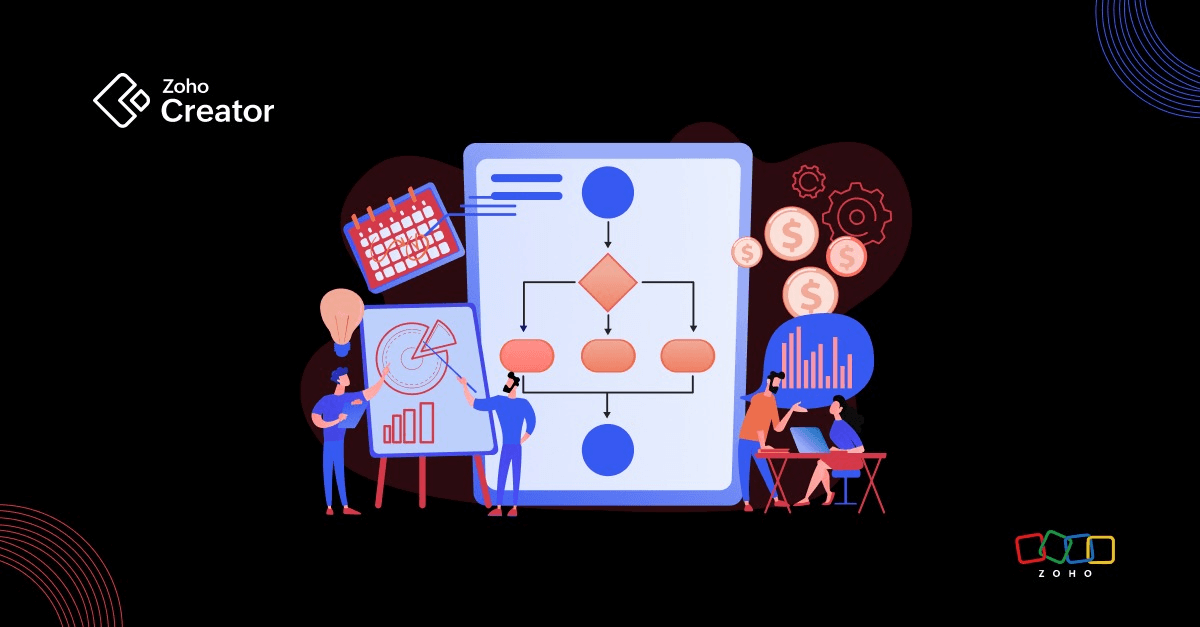- HOME
- Know Your Tech
- AI business process automation: Improve workflow efficiency
AI business process automation: Improve workflow efficiency
- Last Updated : October 30, 2025
- 104 Views
- 10 Min Read
What if your team could cut out hours of repetitive tasks and let technology handle the heavy lifting? As a business leader, you know that inefficient workflows lead to wasted time and increased costs. Traditional methods often cause delays and mistakes, making it harder for your team to focus on the important tasks. That's where AI business process automation (BPA) backs you up, offering a practical solution to improve your operations.
Highlights:
- AI-driven business process automation (BPA) simplifies workflows, saving time and reducing errors by automating repetitive tasks like approvals and data entry.
- Key benefits include improved efficiency, cost savings, enhanced accuracy, scalability, and better compliance, helping businesses streamline operations and boost productivity.
- AI tools adapt to changing business needs, providing real-time decision-making and predictive insights to improve performance.
- Zoho Creator offers a low-code platform for seamless automation, enabling businesses to design custom workflows with minimal IT involvement and scale easily.
In 2022, the global workflow management system market was valued at approximately 9.54 billion USD, with projections indicating a robust annual growth rate of 33.3% from 2023 to 2030. This rapid growth is driven by the increasing adoption of AI-powered tools, as businesses turn to smarter, automated solutions to optimize their workflows and improve efficiency.
This blog post will examine how AI business process automation is reshaping operations. By automating routine tasks and providing intelligent decision-making support, AI helps save time, reduce errors, and increase productivity.
What is AI business process automation?
AI business process automation refers to using artificial intelligence to simplify and improve workflows by automating repetitive business processes. Unlike traditional automation, AI systems can learn from historical data, identify patterns, and adapt to changing business needs, creating dynamic processes that continuously improve. This enables businesses to shift from static workflows to intelligent systems that predict trends and improve operations in real time.
Benefits of implementing AI in business workflows
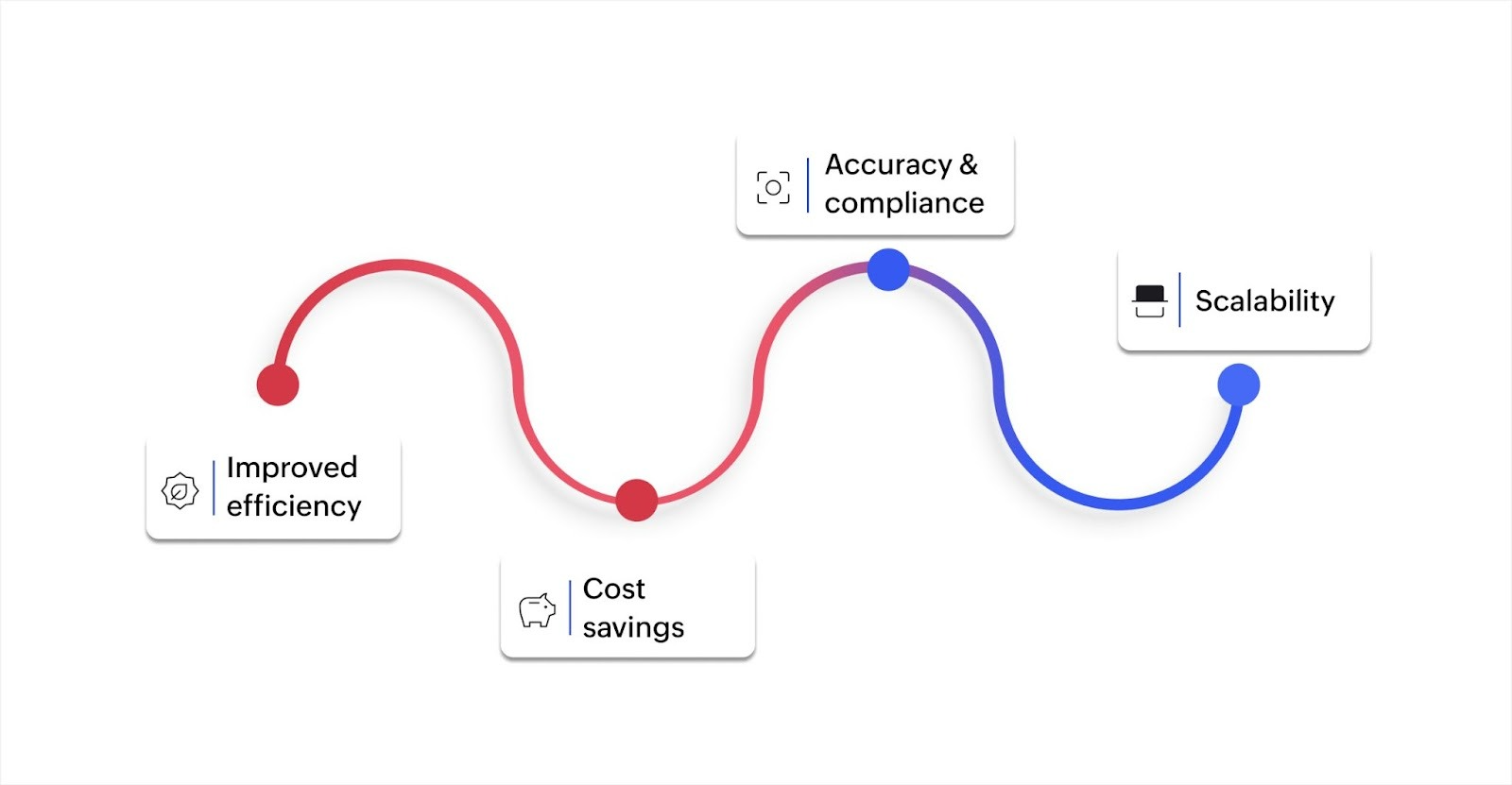
As businesses face increasing demands for efficiency and scalability, AI-driven business process automation is becoming essential. Gartner had predicted that, 70% of organizations would adopt infrastructure automation, a trend that is now evident as AI continues to play a key role in streamlining operations.. AI-powered automation is reshaping business workflows, delivering significant benefits. Let’s explore how AI can enhance your operations.
Improved efficiency
One of the primary advantages of AI-driven business process automation is its ability to drastically enhance operational efficiency by automating repetitive, time-consuming tasks. For instance:
- In financial services, AI accelerates loan processing by automating identity verification and credit checks, cutting the time from days to hours.
- In manufacturing, AI predicts when equipment needs maintenance, preventing downtime and improving operational efficiency.
By freeing up human resources from routine tasks, AI allows employees to focus on higher-value work, resulting in faster, more informed decision-making.
Cost savings
AI significantly reduces cost by automating specific manual processes and optimizing resource use. For instance:
- In retail, AI uses machine learning to forecast demand and improve inventory, reducing overstocking and stockouts.
- In manufacturing, AI-powered predictive maintenance minimizes unplanned downtime, significantly lowering maintenance costs.
These improvements allow businesses to allocate resources more effectively, driving profitability and operational sustainability.
Accuracy and compliance
AI-powered automation reduces human error, ensuring greater consistency and accuracy across workflows. This is particularly valuable in industries with strict compliance requirements.
- In pharmaceuticals, AI automates compliance checks during drug trials, ensuring regulatory standards are met without manual oversight.
- In finance, AI verifies transactions in real time, ensuring compliance with regulatory standards and minimizing the risk of costly violations.
By removing manual processes, AI improves operational accuracy and strengthens compliance, safeguarding your business against legal risks.
Scalability
AI business process automation systems are inherently scalable, making them ideal for growing businesses. These platforms easily handle increasing data volumes and more complex operations without requiring extensive infrastructure changes.
- In logistics, AI improves delivery routes in real time, adapting to high-demand periods like peak seasons without major system overhauls.
- In ecommerce, AI automates inventory management and order fulfillment, adjusting seamlessly to fluctuations in demand.
With cloud-based AI solutions, businesses can scale effortlessly, ensuring performance remains optimal as they expand.
By integrating AI, businesses can simplify processes, lower costs, improve precision, and scale smoothly, driving long-term growth and ensuring consistent success.
Challenges in adopting AI for business process automation
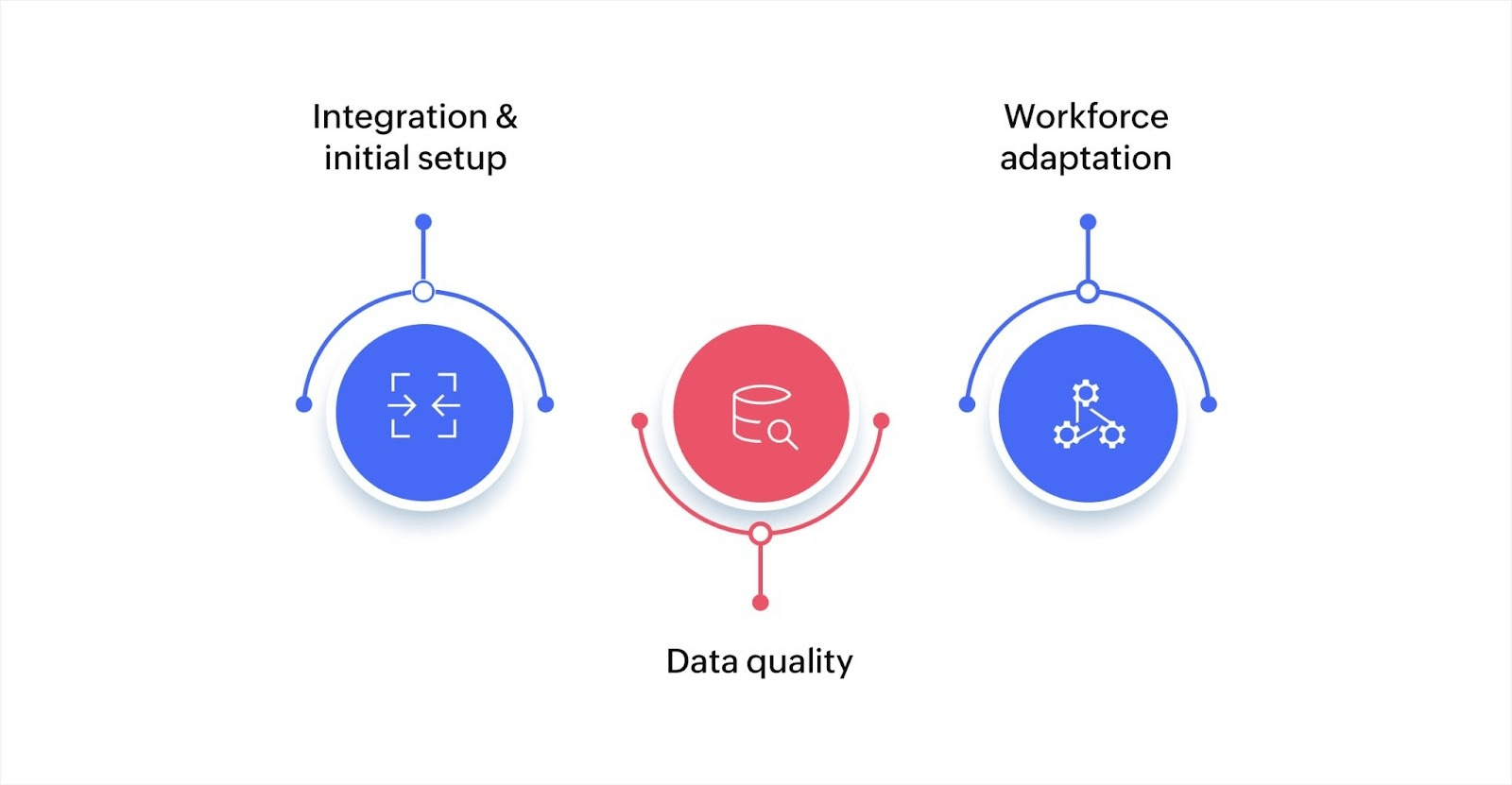
Although AI offers clear benefits for business process automation, many businesses encounter challenges during its implementation. These include technical issues like system integration and data quality, as well as the need for workforce adaptation.
Integration and initial setup
Integrating AI into existing systems requires time, investment, and customized solutions.
- System integration: AI models must be connected with current business systems through APIs or middleware.
- Data infrastructure: Strong data pipelines are necessary to manage, preprocess, and deliver data to AI models.
Careful planning is essential to ensure smooth integration with existing systems.
Data quality
For AI to deliver reliable results, businesses must maintain high-quality, structured data.
- Data preparation: Proper data cleaning and labeling are needed to train AI models effectively.
- Data security and privacy: Businesses must also comply with regulations like GDPR, as AI relies on large datasets to function.
The success of AI-driven business process automation depends heavily on data quality, making strong data management practices important.
Workforce adaptation
To fully utilize AI-powered automation, businesses need to focus on upskilling their workforce.
- AI expertise: Hire or train employees with expertise in AI, data science, and machine learning to manage and refine models.
- Reskilling: As AI takes over routine tasks, employees should be trained for more strategic roles, like interpreting AI insights and making decisions based on them.
Investing in employee training helps mitigate concerns about job displacement and ensures successful AI adoption.
Key technologies powering AI business process automation
AI-powered automation relies on several interdependent technologies, including machine learning, NLP, and cloud computing. Platforms like Zoho Creator integrate these technologies to provide an end-to-end solution for automating business processes efficiently and effectively.
Machine learning algorithms
Machine learning (ML) algorithms are fundamental to enabling AI-driven decision-making. These algorithms use historical data to recognize patterns and make predictions. They are typically trained using supervised or unsupervised learning methods, depending on the task.
- Training and validation: In a production environment, ML models are trained using large datasets and validated for accuracy. Ensuring your data is clean and relevant is a significant part of the process.
- Model deployment: Once models are trained, they can be deployed via APIs or microservices architecture, allowing them to integrate seamlessly into existing workflows for automated decision-making.
Natural language processing (NLP)
NLP enables machines to process and understand human language. This is particularly critical in automating customer interactions, such as chatbots or virtual assistants. NLP combines computational linguistics and machine learning to extract meaning from text or speech.
- Text classification and sentiment analysis: NLP is often used to automate the classification of customer inquiries or determine the sentiment behind customer feedback.
- Complexity: Building an effective NLP system often requires substantial domain-specific tuning. Pre-trained models like BERT or GPT can be fine-tuned for specific tasks, ensuring more accurate responses in customer service automation.
Computer vision
Computer vision, powered by deep learning, enables machines to process visual data and recognize objects in images or video streams. This technology is often integrated with IoT devices to enable automated monitoring and process automation.
- Real-time object recognition: In manufacturing, computer vision can monitor assembly lines, identifying defective products in real time.
- Integration with IoT: Computer vision systems are often deployed on edge devices, which process visual data locally before sending critical information to the cloud for further analysis. This reduces latency and improves real-time decision-making.
Robotic process automation (RPA)
RPA automates rule-based tasks that do not require human intervention. RPA tools are typically built using workflow automation platforms that can communicate to various applications and databases to retrieve and process data.
- Task automation architecture: Robotic process automation systems are often deployed using orchestration tools, which manage and schedule bot execution. Predefined events or schedules trigger these bots and can interact with a range of enterprise systems without requiring changes to the underlying codebase.
- Error handling and exception management: A strong RPA deployment requires built-in exception handling to ensure that when an error occurs, it is handled without manual intervention.
Big data analytics
AI-powered business process automation heavily relies on big data analytics to process vast amounts of real-time data from various sources. This data is important for training ML models and refining decision-making algorithms.
- Data pipelines and ETL: Building an efficient big data system often involves creating data pipelines that extract, transform, and load (ETL) data from various sources into a centralized data lake or warehouse for processing.
- Advanced analytics: Big data analytics involves techniques like predictive modelling and clustering that help AI systems anticipate trends and inform automated decisions.
Cloud computing
Cloud computing enables businesses to deploy AI-driven automation tools without the need for on-premises hardware investments. Platforms like Zoho Creator use cloud infrastructure to provide scalable solutions that grow with your business.
- Elastic scaling: Zoho Creator's cloud-native architecture allows applications to scale horizontally by provisioning additional resources in response to increased demand. This ensures consistent performance even during traffic spikes, without manual intervention.
- AI as a service: Zoho Creator integrates AI capabilities through its intelligent assistant, Zia, and supports both OpenAI and Zoho's GenAI. These AI tools assist in various aspects of application development, from data modeling to workflow automation, enhancing the development process.
- Unified data integration: With Zoho Creator's unified data services, businesses can connect to over 500 third-party applications, streamlining data integration processes. This feature simplifies data handling and ensures seamless connectivity across various platforms.
By utilizing cloud computing, Zoho Creator offers businesses a flexible, scalable, and efficient platform to implement AI-powered automation, driving innovation and growth.
Internet of things (IoT) integration
IoT devices provide real-time data that can drive AI-driven decision-making. By integrating IoT sensors with AI systems, businesses can automate the monitoring and control of physical assets.
- Edge computing: IoT devices often rely on edge computing to process data locally before sending critical insights to centralized AI models. This reduces network load and allows for faster decision-making in real-time applications.
- Data streams: IoT-generated data feeds directly into big data platforms, improving predictive analytics models by adding real-time context to decision-making.
For businesses looking to build customized IoT solutions, Zoho Creator's IoT app development platform enables seamless integration and automation of IoT devices to enhance decision-making and operational efficiency.
Cognitive computing
Cognitive computing is the simulation of human thought processes in AI systems, enabling them to solve complex problems requiring reasoning, judgment, and decision-making. It is often integrated with NLP and RPA to enhance workflow automation.
- Advanced analytics: Cognitive systems apply sophisticated algorithms to unstructured data, such as images, voice, and text, to derive actionable insights.
- Industry-specific applications: Cognitive computing can automate diagnostic procedures by simulating medical professionals' reasoning. For instance, in finance, it can assist with risk assessment models.
AI business process automation relies on the smooth integration of these technologies to enhance operational effectiveness and minimize manual effort. By combining machine learning, NLP, RPA, and other technologies, businesses can optimize workflows and boost productivity.
AI-powered automation vs. traditional automation
AI-powered automation enhances traditional methods by utilizing data-driven insights and advanced algorithms. Let’s explore how each approach manages workflows, scales, and adapts to business needs.
| Aspect | AI-powered automation | Traditional automation |
| Adaptability | Adapts to changing business conditions and learns from data. | Fixed; requires manual intervention for changes. |
| Complexity | Handles large datasets and multi-step decision-making. | Focuses on rule-based tasks and linear workflows. |
| Speed | Responds instantly to changes, ensuring minimal delays. | Slower, dependent on scheduled tasks or batch processing. |
| Efficiency | Automates workflows continuously, reducing manual work. | Relies on human oversight, limiting efficiency. |
| Cost savings | Reduces manual intervention, offering long-term savings. | Initial savings, but higher long-term operational costs. |
| Scalability | Easily scales by adjusting resources automatically. | Requires manual adjustments and more infrastructure. |
| Data utilization | Processes both structured and unstructured data for smarter decisions. | Limited to structured data, missing key insights. |
When considering automation for your business, shifting from traditional systems to AI-powered solutions can be a turning point. AI improves scalability, simplifies processes, and boosts flexibility, all of which are crucial for maintaining a competitive edge in today's rapidly changing business environment.
How can AI business process automation be implemented effectively?
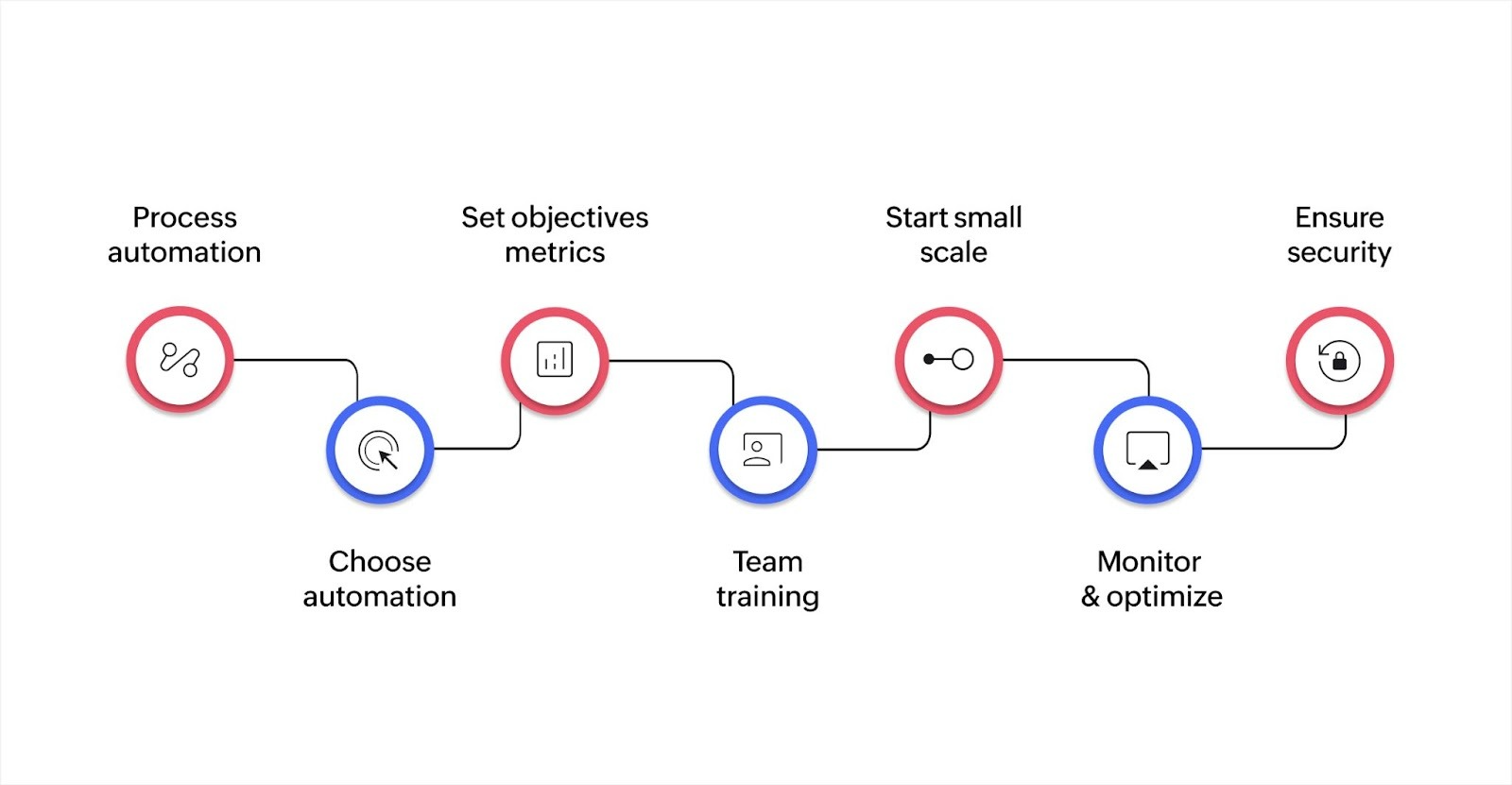
By adopting a clear and strategic implementation plan, businesses can utilize AI to increase efficiency, minimize human error, and drive more informed, data-driven decisions, ultimately optimizing overall performance.
Identify key processes to automate
Start by assessing your workflows and identifying repetitive, time-consuming tasks, such as customer support or inventory management. Automating these frees up valuable time, enabling your team to focus on higher-value activities.
Choose the right AI business process automation tools
When selecting the right AI business process automation tools, it's important to choose a platform that integrates seamlessly with your current systems and scales as your business grows. Zoho Creator offers an intuitive, low-code platform, making it suitable for businesses of all sizes with minimal IT involvement.
Set clear objectives and measurable metrics
Define goals such as reducing operational costs or improving efficiency. Set clear metrics like time saved, error reduction, and productivity improvements to track the effectiveness of automation.
Train your team and align stakeholders
Invest in training to ensure your team understands new tools and workflows. Engage key stakeholders early to secure buy-in and ensure smooth adoption across the company.
Start small and scale gradually
Focus on automating high-impact, low-risk processes first. Once these workflows are running smoothly, expand to more complex tasks.
Continuously monitor and optimize
Regularly track performances and make adjustments to improve efficiency. Continuous improvement ensures AI systems remain effective as your business evolves.
Prioritize data security and compliance
Choose platforms like Zoho Creator that comply with industry regulations and uphold high data security standards, especially for industries like healthcare or finance, where compliance is critical.
AI-driven workflows help companies of all sizes simplify their operations and respond to market demands faster. With the continuous evolution of AI, businesses can improve their processes for higher efficiency, reduced costs, and enhanced performance.
Automate smarter, work faster
AI-powered process automation is key for businesses looking to optimize operations and reduce manual work. By automating routine tasks, companies can free up valuable resources to focus on strategic priorities. This approach helps eliminate inefficiencies, accelerate decision-making, and minimize errors, driving improved productivity and fostering rapid growth.
Zoho Creator provides a solution to these challenges with its low-code platform, enabling businesses to create custom applications and automate workflows effortlessly. With features such as AI-driven app creation, visual workflow design, and seamless integrations, Zoho Creator helps businesses build customized solutions without the need for extensive coding expertise.
Additionally, CoCreator, powered by Zia, Zoho’s intelligent AI assistant, collaborates with you to simplify and optimize your workflow automation, helping you achieve your objectives with greater efficiency. Trusted by thousands of companies, Zoho Creator is designed to enhance operational efficiency and scale your business effectively.
 Ann Elizabeth Sam
Ann Elizabeth SamHey! I'm Ann, and I work as a content writer at Zoho Creator. I'm exploring the SaaS world through various forms of content creation. Outside of work, I love dancing and would give up anything to read a good murder mystery.

